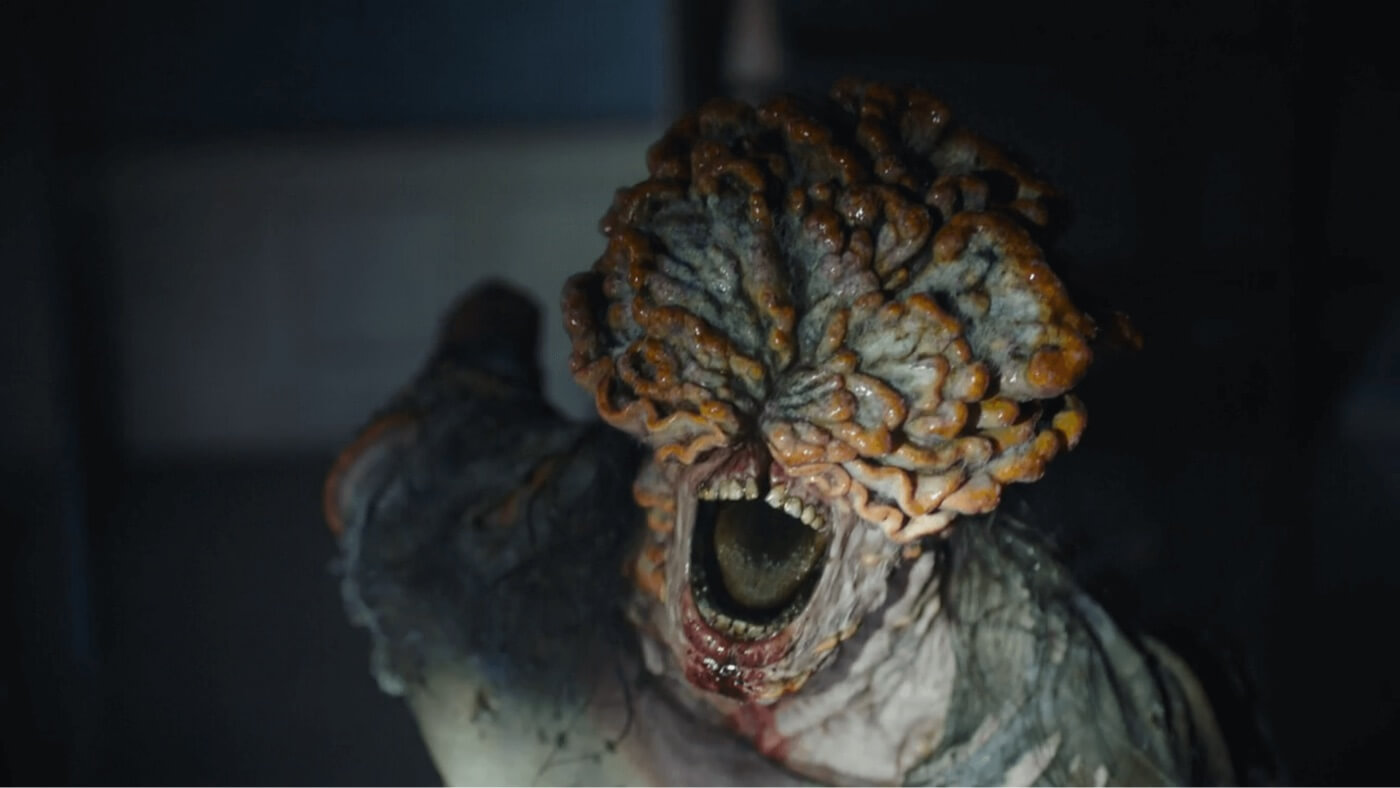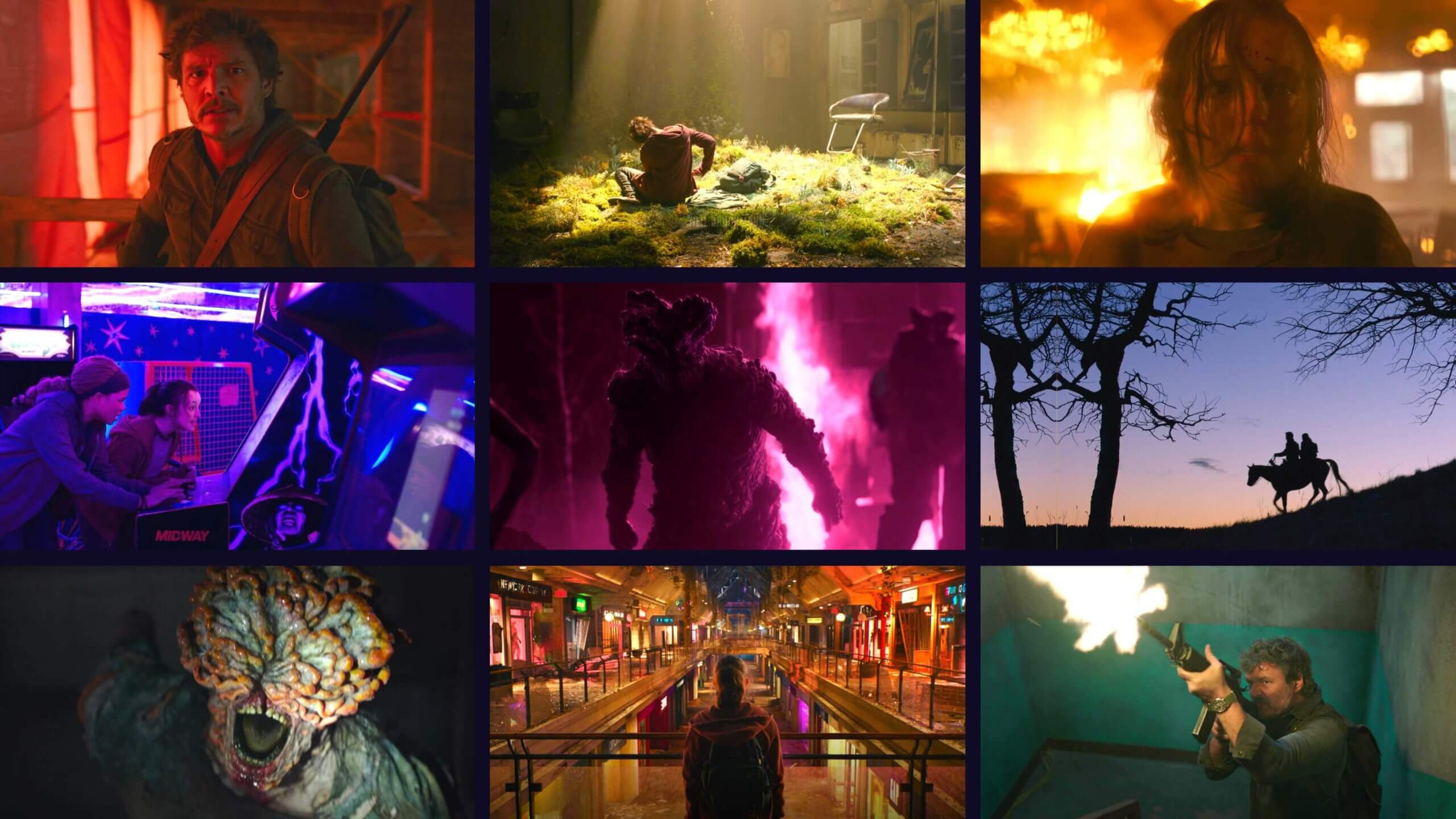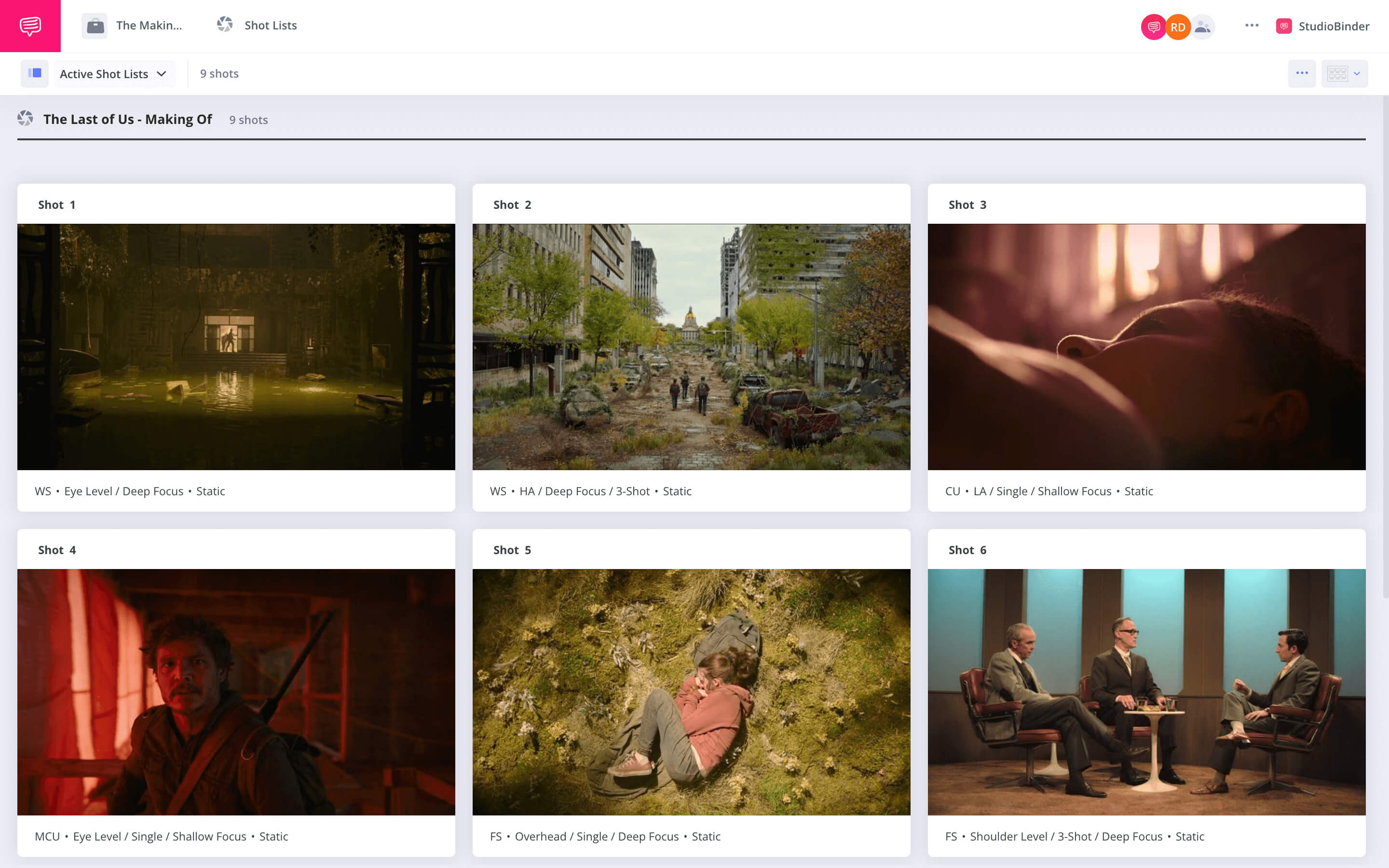The Last of Us is one of HBO’s most recent blockbuster television shows. Looking at a history of video game adaptations, the cards were stacked against the series, but it avoided all the pitfalls of previous takes on video games to become a resounding success. The secrets to the show’s quality can be found in The Last of Us behind the scenes– each element of the show was carefully considered and expertly executed.
The Making of the Last of Us
Writing The Last of Us
Before the cameras started rolling, The Last of Us showrunners Craig Mazin and Neil Druckmann needed to figure out how they could take a sprawling and beloved video game (created by Druckmann) and fit it into a limited series.
Mazin and Druckmann discuss the process at length in this featurette:
The making of The Last of Us CInematography Collection
The making of The Last of Us
As is made clear by this video, Mazin had the utmost respect for the material he was adapting, often a prerequisite for a good adaptation.
Another prerequisite: feeling comfortable diverging from the source material. According to Mazin, Druckmann was completely open to making changes to his video game, as long as there was a strong reason.
“Neil would always say, 'We can change anything, but we need to talk about why. And if there's not a good reason—if we can’t do better—let's deliver what we have” [...] The big secret is, Neil Druckmann was so confident and secure in the story of the game that he was then able to be flexible with me to go wander and fill in and change and alter.”
— Craig Mazin on Neil Druckmann
One of the changes was that both Mazin and Druckmann felt they needed to add more exposition for how the outbreak actually happened.
“Cordyceps is a fascinating concept, and it’s absolutely real. We wanted to push that a little further and to give us as much reality as we could because the realer that is, the more we connect to the characters that are in that space playing around.”
— Craig Mazin
This alteration was also rooted in the different world The Last of Us television show would be released in. The audience for the series has gone through the Covid-19 pandemic, and were therefore more knowledgeable about epidemiology than they were when the video game was released. Thus, the exposition would actually be even more terrifying — and real.


The making of The Last of Us
The “real”-ness of the show also comes from its character-oriented approach to storytelling. To Druckmann, the Achilles’ heel of previous video game adaptations is that they were too focused on the spectacle of fending off various enemies. For The Last of Us, he wanted a different approach.
“What if it’s about intimate relationships — an exploration of the unconditional love a parent feels for their child and the beautiful things that could come out of that and the really horrible things that could come out of that?”
— Neil Druckmann
By sticking to a universal theme like parenthood, Mazin and Druckmann could make the unimaginable relatable.
Other departments on The Last of Us took this character-oriented approach into account.
The Making of The Last of Us
The Last of Us Cinematography
The cinematographers on The Last of Us were given an unenviable task. The video game was already heralded for its staggering visuals and instantly recognizable imagery.
So for the DPs, the goal was simple but difficult: they needed to emulate the look of the video game while avoiding simply mimicking it.
As cinematographer Ksenia Sereda put it:
“I played the game for the first time almost four years ago, and I was absolutely fascinated by its cinematic look – I wasn’t ready for how beautiful it was, the lighting was gorgeous. [...] So of course, it was a lot of pressure to translate the video game language into the TV series because it’s already beautiful and everyone, including nearly all of the crew, loved the game.”
— Ksenia Sereda
Sereda and her fellow The Last of Us DPs used a few different tools to achieve this translation.
Camera/Lens Choices
The first was the decision to rely on close-ups which utilized wide lenses. This would create a look reminiscent of the video game, with the character front and center while their surroundings are also crystal clear.
Sereda opted to shoot closeups with lenses as wide as 25mm. But this meant she needed to find a lens which wouldn’t distort the shape of the actor’s face. This led her to the Cooke S4/i spherical lenses, which are able to minimize the typical distortion with similar lenses.


Cooke S4/i lenses • Making The Last of Us
Sereda decided to shoot the series on an Alexa Mini, which also helped her achieve the close-ups with clear backgrounds. Fellow The Last of Us cinematographer Eben Bolter explained:
“Unlike the shallow focus you get from large format or 65 mil, which is the fashion right now, the Alexa captures a large amount of detail in the background, so you’re not just getting out-of-focus blobs.”
— Eben Bolter


Deep focus • The making of The Last of Us
Lighting
The cinematographers’ lighting choices, too, helped conjure the game’s distinctive look. The Last of Us has a naturalistic feel, avoiding stylized lighting and opting for lumination which feels true to the world. The DPs on the series followed the same approach.
Often, lighting followed a “less is more” philosophy. For daytime interiors, Eben Bolter utilized “skip lighting,” a technique he borrowed from legendary cinematographer Conrad Hall which refers to bouncing lights from the window onto bright set dressing like tablecloths to light subjects.
The result is a naturalistic, diffused lighting that rarely calls attention to itself.


Lighting bounced off the piano • The Last of Us set design
Even in the series’ most dramatic moments, the lighting remains strictly motivated and rooted in naturalism.
Take the climactic cul-de-sac scene in Episode 5:
Episode 5 climax • The making of The Last of Us
As with most of the scenes in the post-apocalyptic show, Bolter had no artificial light within the sequence to rely on– this is a world without electricity. So he needed to light the characters in a way which would feel true to the night while also visually legible to the viewer.
First, Bolter simulated moonlight with a net of four hundred six foot bi-color LED tubes which were hung above the set with four cranes. He added a backlight (also motivated by the moon) with ARRI s360 LED sky-panels.
The cinematography of The Last of Us
Once all hell breaks loose and flames enter the scene, Bolter had a new light source to work with. While much of the fire was for real, more would be added in post-production, so the DP shifted the overhead lighting net to a warmer color and flickered the lights to mimic fire.
The result is a visually captivating scene that doesn’t diverge from the realism throughout the rest of the show and the series.
Handheld Camerawork
Another technique the cinematographers employed throughout the making of The Last of Us was a handheld aesthetic. Sereda, who was DP for Episode 1, established the heavy use of a handheld camera.
According to Bolter, who continued to use the technique in his episodes, the handheld look also worked to achieve the overall goal of realism.
“It was a good decision because handheld gives things a documentary-style grounding. When you suddenly put a camera on a stick, it feels like a bit more artifice so we generally defaulted to handheld unless there was a good reason to do something differently.”
— Eben Bolter
The show would often use a ZeeGee to achieve the handheld look. The piece of equipment can be attached to a Steadicam arm, meaning that it’s easier for the camera operator to hold and control. Take a look at how the ZeeGee works in this demonstration video:
How the ZeeGee works
This handheld approach allowed the cinematographers to insert the audience directly into scenes, again emulating the immersive feeling of the video game.
Related Posts
Where did they film The Last of Us
The Last of Us Effects
Of course, The Last of Us wouldn’t be what it was without its incredible special effects. Before any CGI was added, an enormous amount of work went into the practical effects on set.
According to a Canadian artists union president, Damian Petti, the on-set effects during the making of The Last of Us were a massive undertaking:
“It has five art directors and employs an army of hundreds of technicians. It has had six months of prep and shoots [in Alberta] for 12 months.”
— Damian Petti
Special effects of The Last of Us
For the most part, the clickers were made through elaborate prosthetics at Mazin’s request — the creator believed using CGI would have been less tactile. This decision to use SFX makeup had massive repercussions. The swarm of clickers in episode five required 70 prosthetic artists. For the bloater, an actor wore a foam rubber suit which required hours of makeup work on top of it.
The bloater • Behind the scenes The Last of Us
For more on the extensive effects work which went into Episode 5, take a look at this The Last of Us behind the scenes video:
The Last of Us filming
As you can see, the show’s visuals didn’t stop with practical effects. There was also extensive CGI in the making of The Last of Us, which was overseen by visual effects supervisor Alex Wang. The VFX were done by a whopping sixteen visual effects teams, since there were about 250 shots per episode which required computer graphics.
For the CGI, close collaboration was key. DFX supervisor Nick Marshall noted:
“Alex was insistent that our VFX team were as integrated into the process as possible, so we felt like creative partners from the moment the show began.”
— Nick Marshall
Like with the rest of the departments, the VFX team wanted to clear the high bar the original video game set. Said Marshall:
“Everybody knew going into this show that the expectations would be very high. It went mostly unspoken, but it was incredibly important to do justice to the games and the phenomenal work that Naughty Dog carried out in crafting this world. We knew we needed to achieve a level of photorealism that would allow the visual effects to be completely seamless.”
— Nick Marshall
Much of the effects teams’ work was to create background plates that placed scenes in locations like Kansas City, Boston, and Salt Lake City. To make sure these backgrounds were as realistic as possible, the teams traveled to each location and combined what they saw with the look of the game locations.


Making of The Last of Us
To ensure that these backgrounds would blend seamlessly into the live-action footage, Wang had sets scanned with a drone throughout the making of The Last of Us, allowing his team to integrate plates onto the geometry of the scene and adjust to camera movement with motion capture.
The unified vision that persisted through all the departments within The Last of Us ensured that the series would do the iconic game justice while also standing on its own, as a captivating story that feels right at home in a television format.
Up Next
Euphoria Cinematography Explained
Now that you’ve looked at the Last of Us behind the scenes, it’s time to peel back the curtain on another HBO juggernaut: Euphoria. The television phenomenon owes much of its success to his distinctive cinematography. Take a look at how they achieve it.
Up Next: Euphoria Cinematography →
Showcase your vision with elegant shot lists and storyboards.
Create robust and customizable shot lists. Upload images to make storyboards and slideshows.

